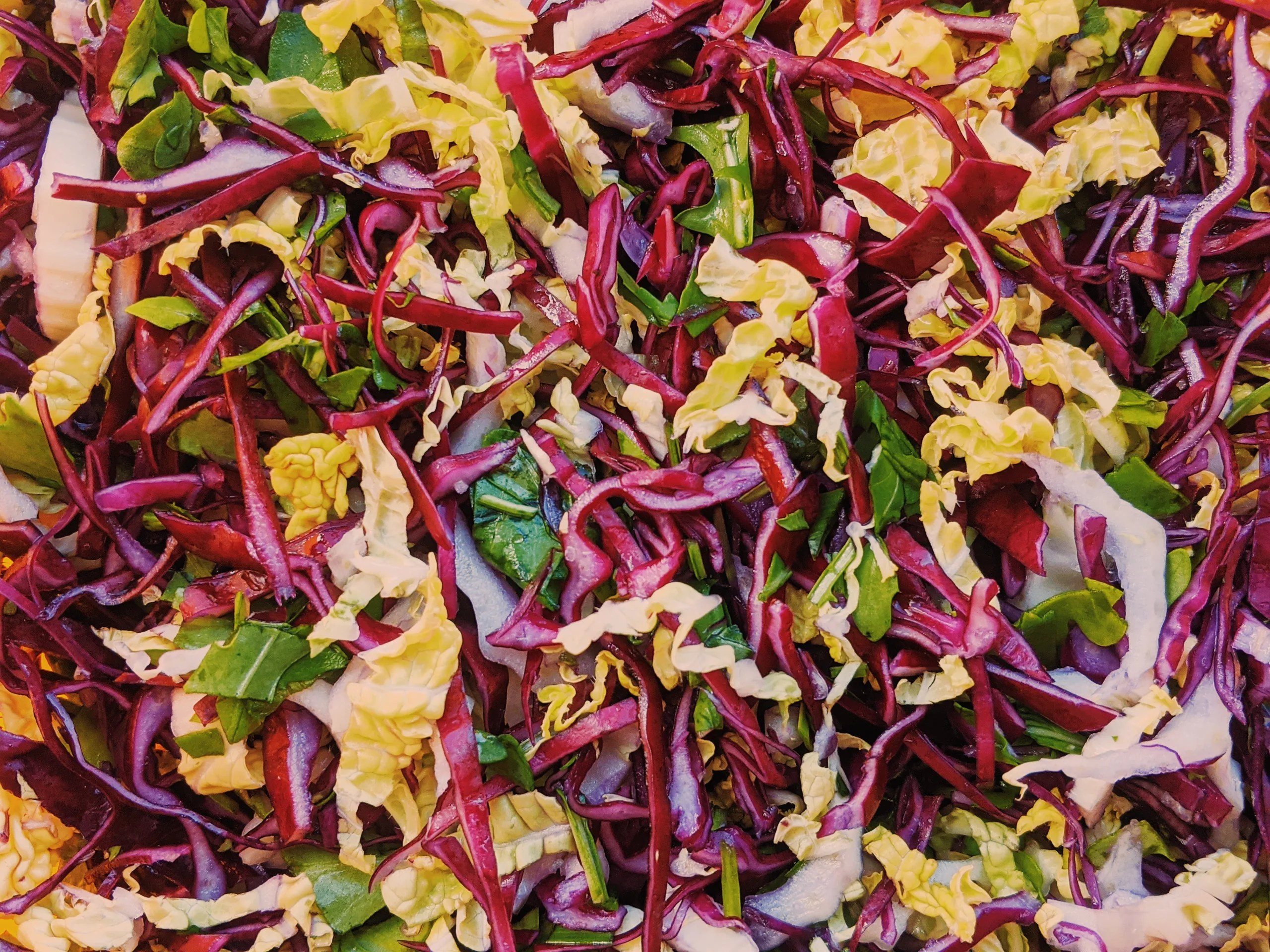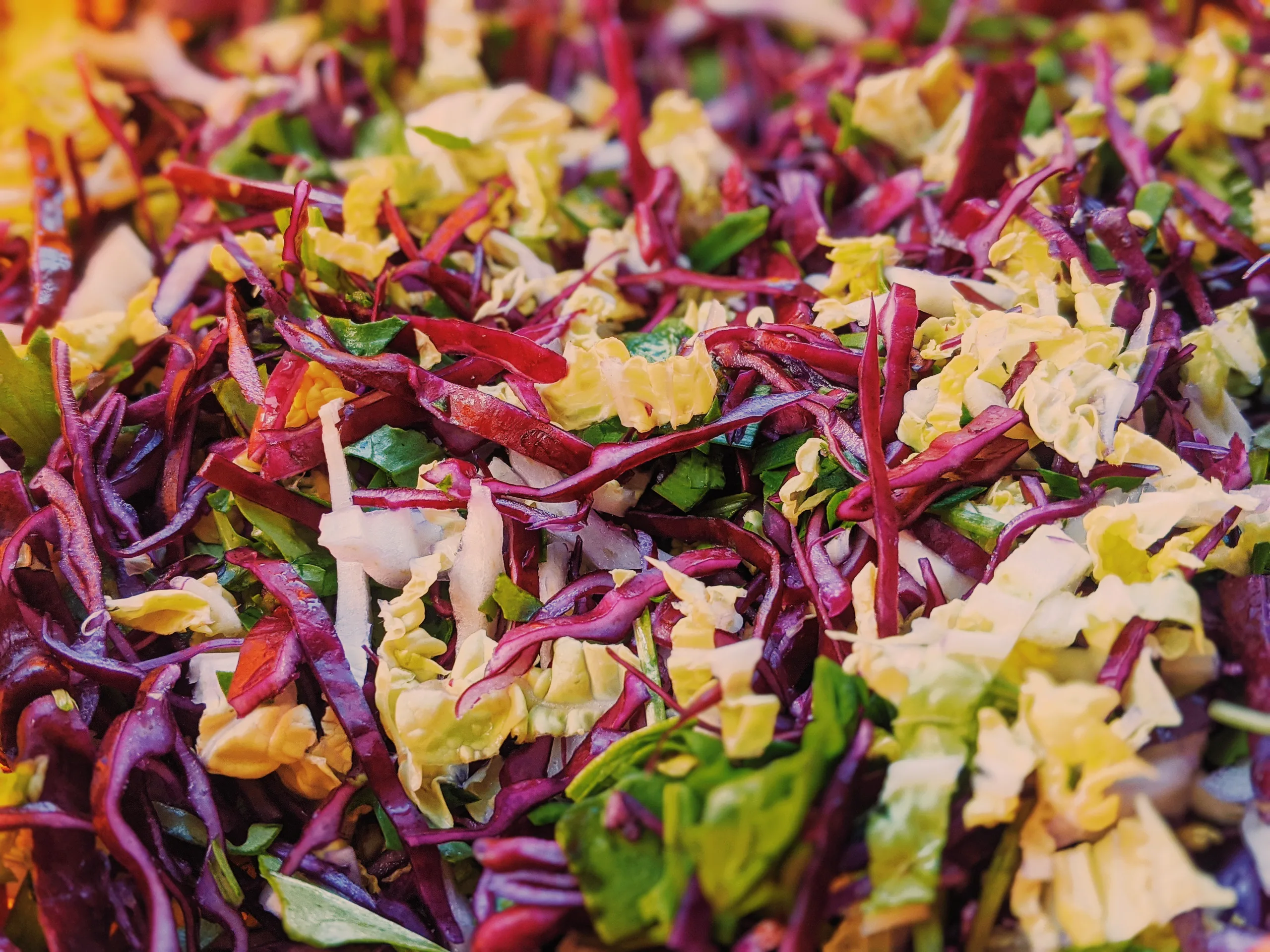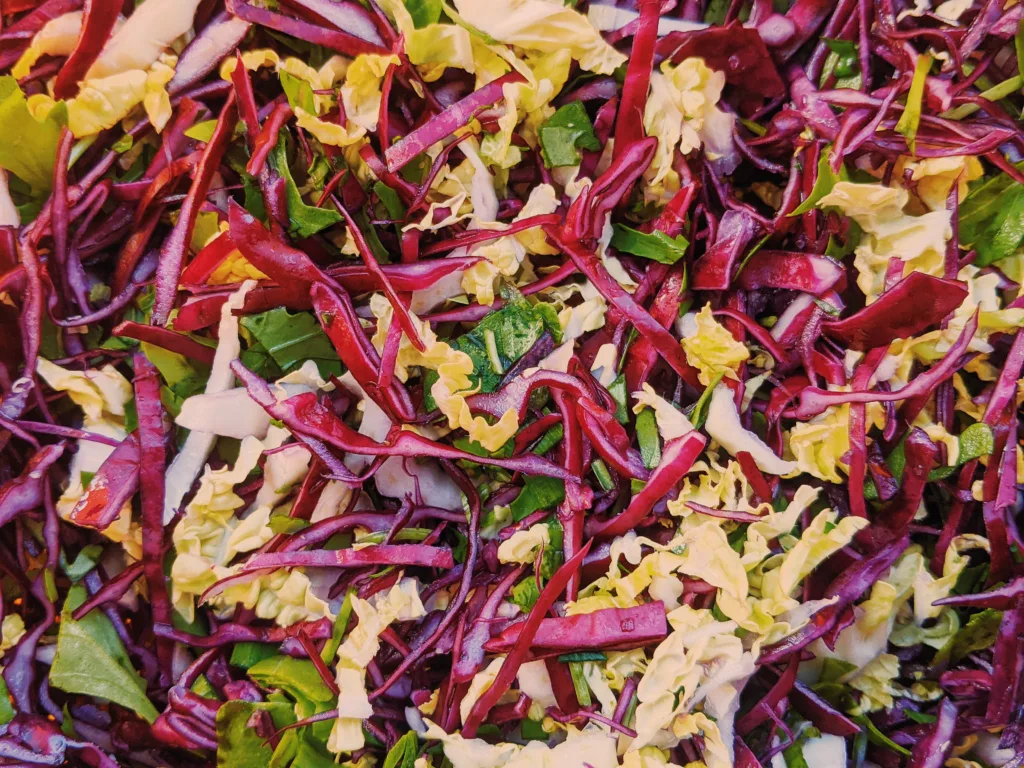Are you looking for a low FODMAP food to add to your diet? Napa cabbage could be the answer! A crunchy, mild-flavored vegetable, napa cabbage is low in FODMAPs and can offer a variety of health benefits. In this article, we’ll discuss whether napa cabbage is a good option for those on a low FODMAP diet and how it can add flavor and nutrition to your meals. We’ll also provide some tips for incorporating napa cabbage into your diet.
Yes, Napa Cabbage is low FODMAP because it contains only trace amounts of fructans and is considered a safe food for those following a low FODMAP diet.
What is Napa Cabbage?
Napa cabbage, also known as Chinese cabbage, is a type of cruciferous vegetable that is grown in many parts of the world. It has a mild, slightly sweet flavor and a crunchy texture. The leaves are typically light to dark green in color and have an elongated shape. Napa cabbage is widely used in Asian cuisine and is often found in stir-fries, soups, salads, and other dishes. It is rich in vitamins A, C, and K as well as dietary fiber.
Napa cabbage can be found year-round at most grocery stores and farmers’ markets. When selecting a head of Napa cabbage for purchase, look for one that has firm leaves with no signs of wilting or browning. To store Napa cabbage, wrap it loosely in plastic wrap and refrigerate for up to one week. When ready to use, rinse the leaves under cool running water before using them in recipes.
Napa cabbage can be cooked using a variety of methods such as steaming, boiling, braising or stir-frying. It can also be eaten raw in salads or used as a wrap or vessel for other ingredients like meat or vegetables. When cooked, the leaves become softer while still retaining their crunchy texture.
Napa cabbage is an excellent source of nutrition and can easily be incorporated into any diet to add flavor and variety. Its versatility makes it a great addition to any meal!
Napa Cabbage and Low FODMAP Diet
Napa cabbage is a great choice for those following a low FODMAP diet, due to its low-FODMAP content. The cabbage is an excellent source of fiber, vitamins A and C, and minerals such as calcium and iron. It has a mild flavor that is slightly sweet and slightly tangy. Napa cabbage can be used in a variety of ways to add nutrition and flavor to meals without overwhelming the palate or triggering symptoms of IBS.
Napa cabbage can be eaten raw, cooked, or pickled. When eaten raw, it can be added to salads for an extra crunch. It can also be sliced thin and added to sandwiches or wraps for extra texture and flavor. For cooked dishes, napa cabbage can be steamed, stir-fried, or sautéed with other low FODMAP ingredients such as garlic-infused oil or onion-infused oil. It pairs well with ginger, garlic-infused oil, soy sauce, chili flakes, sesame oil, rice vinegar or other Asian flavors. Pickled napa cabbage is a popular condiment in many cultures; it adds crunchy tartness to salads or sandwiches without any additional sugar or fat.
Click here to preview your posts with PRO themes ››
In addition to its culinary uses, napa cabbage is known for its health benefits due to its high levels of antioxidants and vitamins A & C. It has anti-inflammatory properties which may help reduce inflammation associated with IBS symptoms such as bloating, cramps, constipation and diarrhea. Napa cabbage also contains compounds which may help protect against certain types of cancer such as breast cancer and colorectal cancer.
In conclusion, napa cabbage is a great option for those following a low FODMAP diet due to its mild flavor and nutritional benefits. It can be used in salads, sandwiches, wraps or cooked dishes for an added crunch and flavor boost without triggering IBS symptoms. Its antioxidant content may also provide additional health benefits such as anti-inflammatory properties which could potentially reduce IBS symptoms as well as benefit overall health.
Nutritional Benefits of Eating Low FODMAP Napa Cabbage
Napa cabbage, also known as Chinese cabbage, is a type of cruciferous vegetable that is low in FODMAPS, making it a great choice for those following a low FODMAP diet. It is a good source of fiber and vitamins A, C, and K. It also contains minerals such as calcium, magnesium, and iron. Napa cabbage is an excellent source of antioxidants and phytonutrients that can help protect against free radical damage and reduce inflammation in the body. The antioxidants in napa cabbage can also help protect against certain types of cancer.
Napa cabbage is high in fiber which helps to regulate digestion and can help reduce bloating and other digestive issues associated with IBS. The fiber content also helps to keep you feeling full longer which can aid in weight loss. Additionally, the vitamin A content helps support eye health while vitamin C plays an important role in supporting the immune system. Vitamin K helps with blood clotting and calcium plays a role in bone health.
In addition to its nutritional benefits, napa cabbage is also incredibly versatile when it comes to cooking. It can be eaten raw or cooked in many different dishes such as stir-fries or salads. Napa cabbage is often used as an ingredient in Asian-style dishes such as kimchi or pickled vegetables. It can also be used as a wrap for sandwiches or burritos or added to soups and stews for extra flavor and nutrition.
Overall, napa cabbage is an excellent choice for those following a low FODMAP diet due to its low levels of FODMAPS and its high nutritional value. Not only does it provide essential vitamins and minerals but it also has antioxidant properties that may help protect against free radical damage and reduce inflammation in the body. Additionally, its high fiber content makes it helpful for managing digestive issues associated with IBS while its versatility makes it a great addition to many dishes.
What is Napa Cabbage?
Napa cabbage, also known as Chinese cabbage, is a type of cruciferous vegetable that is commonly used in Asian cuisine. It has a mild and slightly sweet flavor and its texture is crunchy and crisp. Napa cabbage is an excellent source of vitamins A and C, as well as dietary fiber. It can be eaten raw or cooked, making it a versatile ingredient for low FODMAP cooking.
Click here to preview your posts with PRO themes ››
Low FODMAP Serving Size
The low FODMAP serving size of Napa cabbage is half a cup (75 grams) cooked or one cup (150 grams) raw. It’s important to note that the serving size can vary based on individual tolerances. When in doubt, consult a registered dietitian for personalized advice.
How to Prepare Napa Cabbage
When preparing Napa cabbage, start by removing any damaged outer leaves and discarding them. Rinse the head of Napa cabbage under cold running water to remove any dirt or debris. Chop the head into thin strips or small cubes and set aside until ready to use.
How to Cook Low FODMAP Napa Cabbage
Napa cabbage can be cooked in a variety of ways including steaming, stir-frying, braising, roasting, boiling, sautéing, and even pickling! To steam Napa cabbage, add 1 inch of water to a pot with a steamer basket insert. Place the chopped pieces of Napa cabbage in the basket and cover with a lid. Steam for 5-7 minutes until the pieces are tender but still crisp. For stir-frying or sautéing, heat oil in a large skillet over medium heat before adding chopped pieces of Napa cabbage along with your choice of seasonings (garlic-infused oil works great!). Cook for 5-7 minutes until desired tenderness has been reached.

Possible Side Effects of Eating Low FODMAP Napa Cabbage
Eating low FODMAP Napa cabbage can help reduce symptoms of digestive distress, but there are some potential side effects to consider. Eating a highly restrictive diet can lead to nutritional deficiencies, so it is important to ensure that other sources of essential vitamins and minerals are still part of the diet. Low FODMAP foods can also cause gas and bloating in some individuals, so it is important to pay attention to how the body responds after consuming Napa cabbage.
In addition, some individuals may find that eating low FODMAP foods causes an increase in hunger or cravings for high-FODMAP foods. This is because the body adjusts to a low FODMAP diet by increasing appetite hormones like ghrelin. Finally, if Napa cabbage is eaten too often or in large amounts, it may cause digestive distress due to its high fiber content. It is best to introduce low FODMAP foods slowly and in moderation to ensure that the body can adjust and tolerate them without any adverse reactions.
Recommended Serving Sizes for Napa Cabbage
Napa cabbage is a type of Chinese cabbage, and it has become increasingly popular in recent years. It has a mild flavor and a crunchy texture that make it great for salads, stir-fries, and other dishes. The recommended serving size of Napa cabbage varies depending on the dish it is being used in.
For salads, the recommended serving size is about ½ cup of shredded Napa cabbage per person. The cabbage can be used raw or lightly cooked, depending on the recipe.
Click here to preview your posts with PRO themes ››
For stir-fries, the recommended serving size is about 1 cup of chopped Napa cabbage per person. This should be added to the pan after the other vegetables have been cooked and are nearly done. This will help ensure that the cabbage stays crisp and doesn’t become overcooked.
Napa cabbage can also be used as an ingredient in soups and stews. For soups and stews, the recommended serving size is about 1 cup of chopped Napa cabbage per person. This should be added towards the end of cooking so that it doesn’t become too soft or mushy.
Overall, Napa cabbage is a versatile vegetable that can be used in many dishes. With its mild flavor and crunchy texture, it’s a great addition to any meal! Just make sure to follow the recommended serving sizes for optimal results.
Alternatives to Low FODMAP Napa Cabbage
Napa cabbage is an excellent source of vitamin C, potassium, and dietary fiber. However, for those following a low FODMAP diet, this may not be an ideal choice. Fortunately, there are plenty of other vegetables to choose from that are also low FODMAP friendly.
Some great alternatives to napa cabbage include kale, bok choy, carrots, and green beans. Kale is packed with vitamins A and K and is a great source of dietary fiber. Bok choy is a type of Chinese cabbage that has a mild flavor and can be used in soups and stir-fries. Carrots are a good source of beta carotene and can be eaten raw or cooked in various dishes. Green beans provide plenty of vitamins A and C as well as dietary fiber.
Another option for those looking for an alternative to napa cabbage is Brussels sprouts. These miniature cabbages are high in folate and vitamin C and have a mild flavor that pairs well with many different dishes. Spinach is another low FODMAP option that contains plenty of vitamins A, B6, C, E, K, as well as iron and calcium. Zucchini is also full of essential vitamins and minerals such as magnesium, potassium, and vitamin A – making it a great choice for those looking for more nutrition in their diet.
Finally, collard greens are an excellent alternative to napa cabbage as they contain more iron than most other vegetables. They have a slightly bitter taste but when cooked correctly they can be quite delicious!
No matter what type of vegetable you choose to replace napa cabbage in your diet – make sure it fits into your low FODMAP plan! This will ensure that you get all the nutrition you need without any adverse effects from high-FODMAP foods.

Conclusion
Napa cabbage is indeed a safe and healthy choice for people following a low FODMAP diet. While it should still be consumed in moderation, research has shown that it can be included in your diet without any adverse effects. It is also a great source of vitamins and minerals, making it an excellent addition to your weekly meal plan.
If you do have concerns about including napa cabbage in your diet, it is recommended that you consult with your doctor or nutritionist for more personalized advice. They can assess your individual needs and provide recommendations for how to incorporate this vegetable into your diet safely and healthily.
In conclusion, napa cabbage is low FODMAP, nutritious and safe to include as part of a low FODMAP diet. It can be a delicious addition to meals or eaten on its own as a nutritious side dish. With careful consideration of serving size, napa cabbage can be enjoyed by those with IBS without aggravating symptoms.

